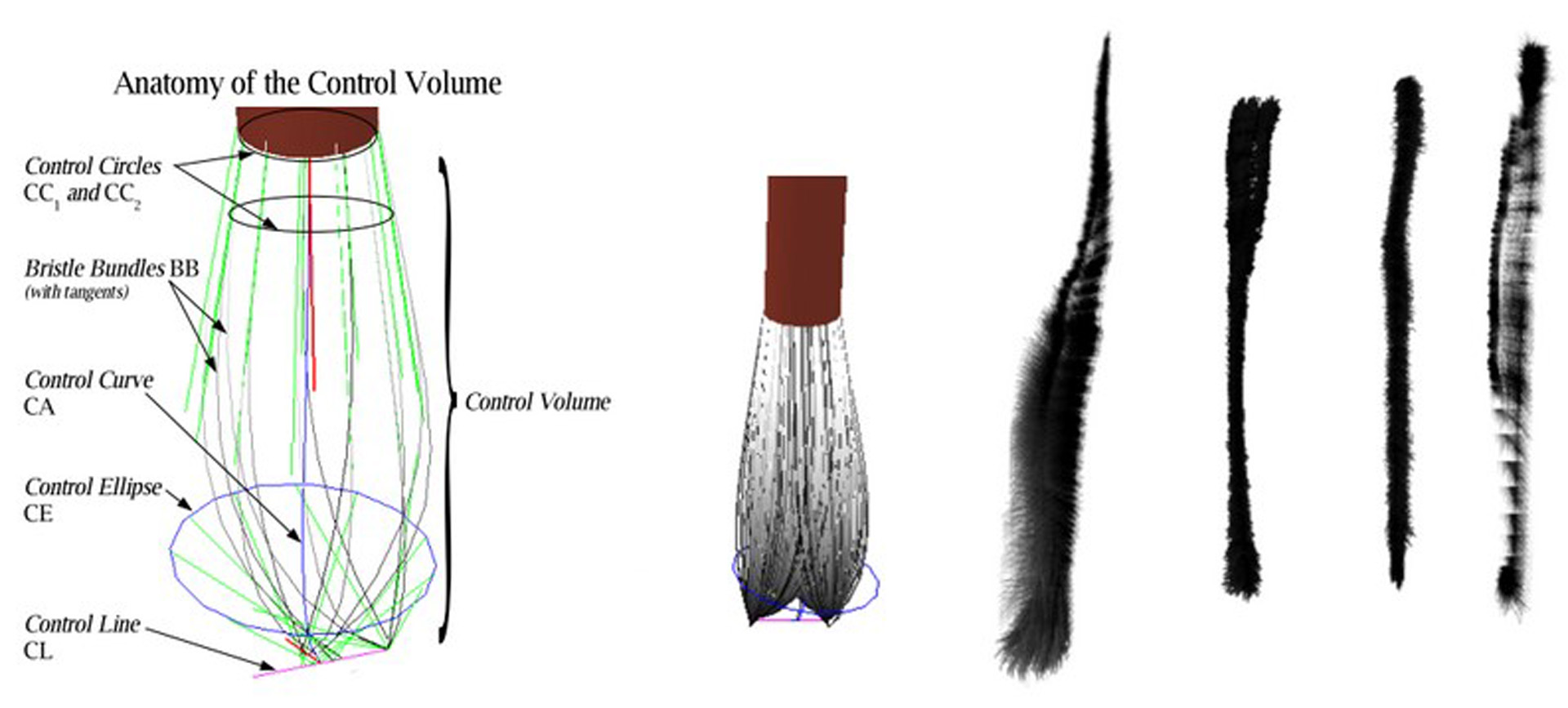“Simulating Chinese Brush Painting: The Parametric Hairy Brush” by Girshick
Conference:
Type(s):
Title:
- Simulating Chinese Brush Painting: The Parametric Hairy Brush
Presenter(s)/Author(s):
Entry Number: 022
Abstract:
In Chinese brush painting each stroke exists on its own as a piece of art. The distinct characteristics of a brush stroke come from the combination of a painter’s skill with the unique physical properties of the paper, ink, and brush. As an artist paints the brush bristles deposit ink and water on the paper, the ink and water diffuse through the paper, and the bristles deform due to external forces.
Digitizing the painting process requires a solution to three distinct problems: modeling ink and water diffusion in paper, modeling soft brush dynamics, and creating a stroke input method. Recent research demonstrates that solutions to the latter two problems are more fundamental for capturing the style of Chinese brush painting [Chu and Tai 2002]. Until recently, however, nearly all research has focused exclusively on the first problem. The Parametric Hairy Brush (PHB) is a new brush model designed to realistically simulate the Chinese brush. The two key properties that distinguish the PHB from previous brush models are a simple and flexible geometric representation of the internal structure of a real brush and the ability to simulate a wide range of stylistic effects “out of the box” without manual configuration of esoteric parameters.
References:
1. Chu, N. S.-H., and Tai, C.-L. 2002. An efficient brush model for physically-based 3d painting. In Proc. of Pacific Graphics, Beijing, China, IEEE Press.
2. Xu, S., Tang, M., Lau, F., and Pan, Y. 2002. A solid model based virtual hairy brush. In Eurographics, 299–308.
3. Xu, S., Lau, F. C., Tang, F., and Pan, Y. 2003. Advanced design for a realistic virtual brush. In Computer Graphics Forum, vol. 22, 533–542.
Acknowledgements:
This input device was proposed by Giovanni Motta in personal communications.





